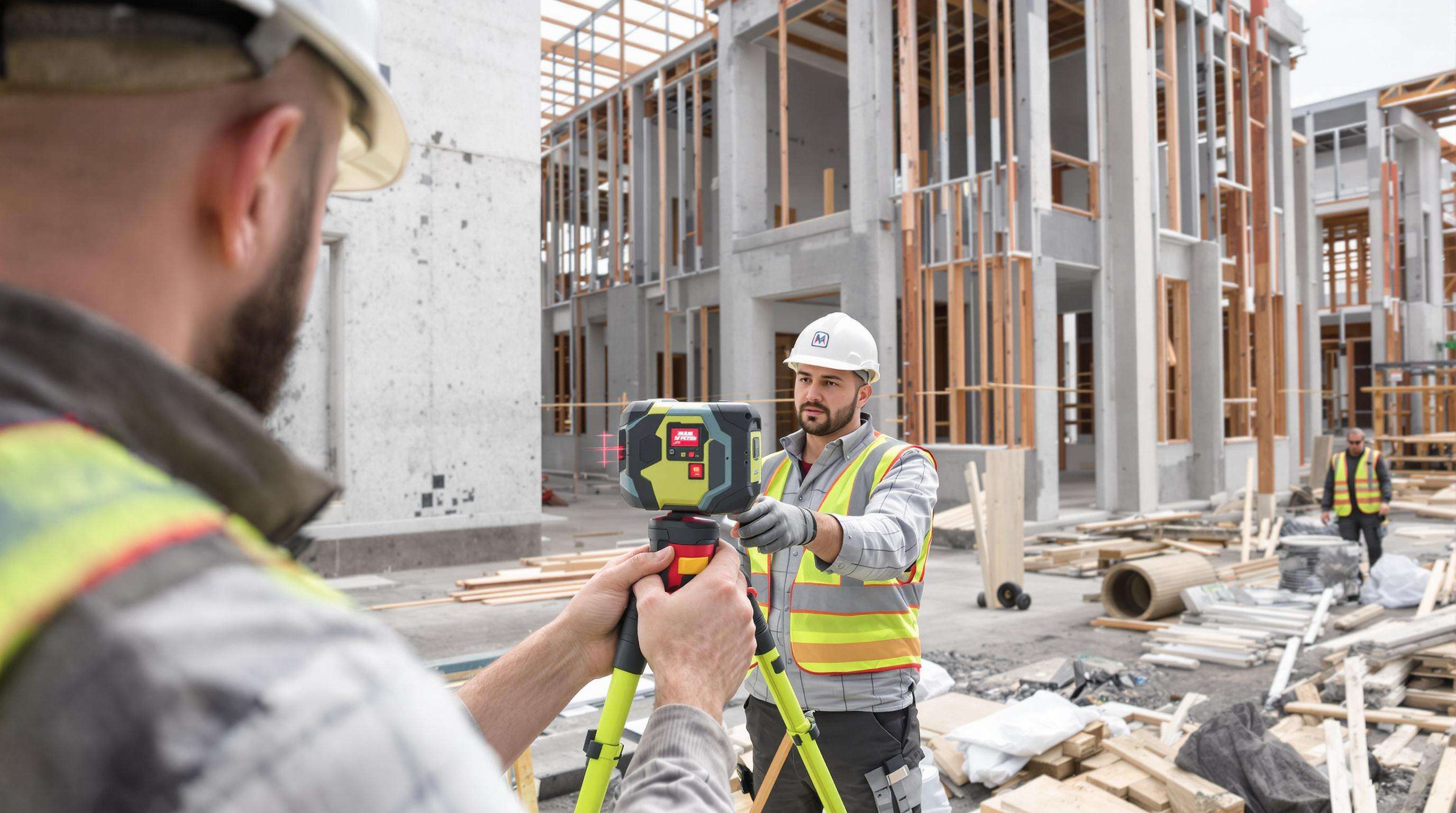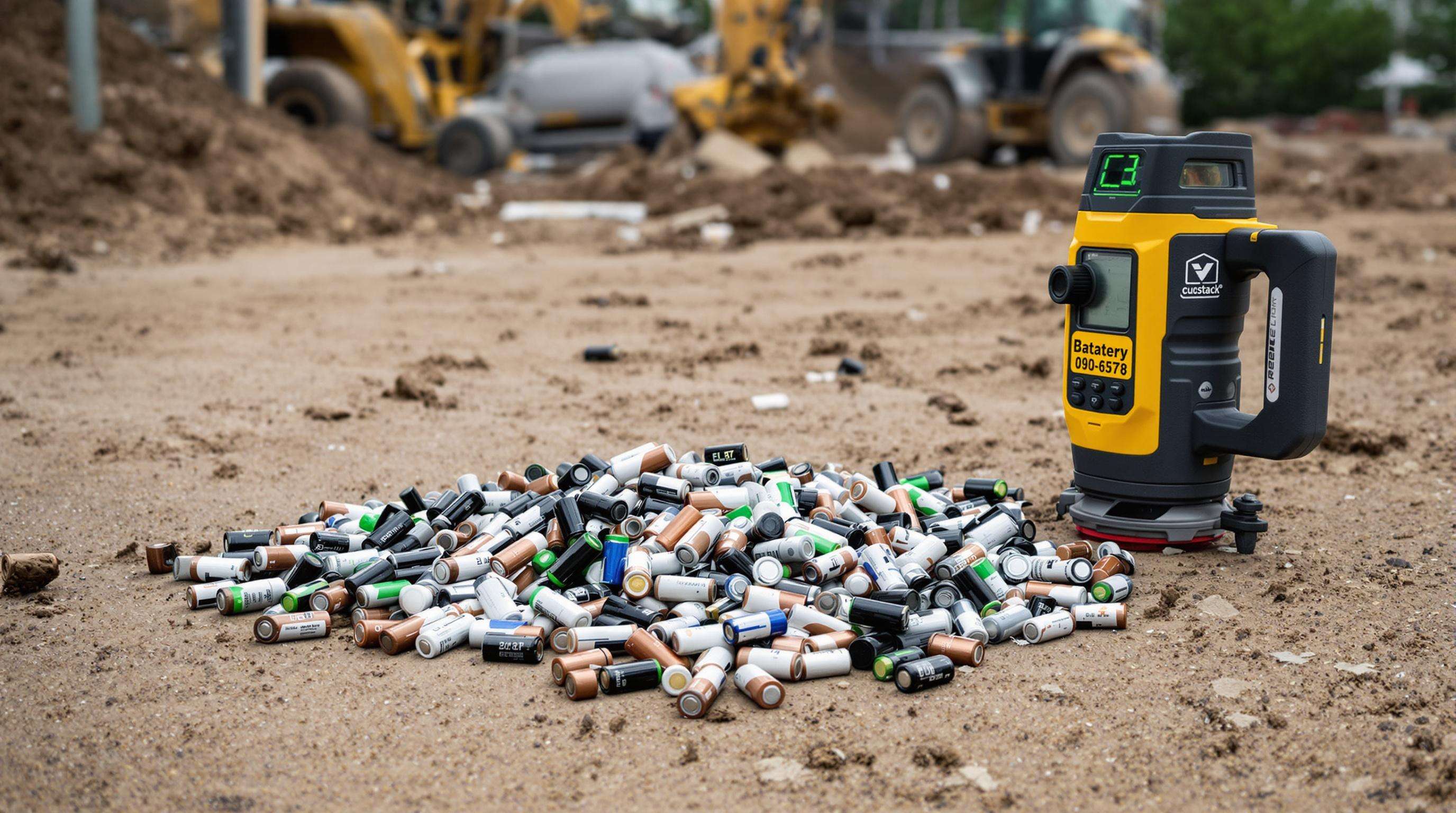
Laser measure provides incredibly accurate, with a sub-millimeter precision, far better than human error in traditional tape-based measurements. Reducing material waste from calculation errors by up to 18% on commercial projects via single-operator workflows (Construction Efficiency Report 2023). Latter brings automation of the data transfer process to reduce rework due to automatic integration with BIM software. The fact that this precision aligns with lean construction principles is underlined by a recent Industry 4.0 analysis which calculated a reduction in excess material orders of 9–14% in foundation and framing stages.
More recently, use of laser measures with recyclable housings and low energy lasers has been fast tracked in large scale LEED and BREEAM certified projects. Survey results from the 2024 Green Building Council reveal that contractors—who are faster—are finishing projects up to 23% more quickly when they use laser tools combined with solar-powered base stations. This has then also driven 68% of EU construction companies to require carbon-neutral tool fleets: enter the next generation of devices, built with 40% less plastic and increase in modular design to ease maintenance.
Three factors drive this change:
These trends position laser measurement systems as critical tools for meeting net-zero construction targets by 2030.

Each later we are discarding 15 billion disposable batteries worldwide (EPA 2023), much of that coming from the excessive use of heavy laser measure tools on construction sites. One large-scale project can go through over 200 alkaline batteries per year and incur hazardous waste streams. The problem is that only 18% of these batteries are recycled, which means in the landfills those thousands of tons piled up leaching amorphous spikes of zinc and manganese until something eats it. This is further validated in a 2023 industry analysis that stated soil contamination was found to be 40% more likely in wayside locations compared to controlled industrial waste facilities.
Lithium battery production uses 500,000 gallons of water per mined ton (World Economic Forum 2023) and releases 150–200 kg CO² per kWh, equivalent to a diesel truck traveling 500 miles. The best-selling brands of alkaline batteries have an initial carbon footprint up to 30% lower than competing brands. Yet that difference is easily offset within days or even hours - the average usable life of alkali cells being perhaps only one third longer than once-through cells when connecting a low drain DC load like a flashlight bulb. Here is a little perspective — powering laser measure tools with disposables create 8x the lifecycle emissions of rechargeables!
| Metric | Disposable Batteries | Rechargeable Batteries |
|---|---|---|
| CO² per 100 uses | 120 kg | 15 kg |
| Water consumption | 2,800 gallons | 350 gallons |
| Landfill contribution | 98% | 12% |
The EU’s 2025 Battery Directive achieved a 35% waste reduction in German pilot projects by mandating ISO-certified battery recyclers and deploying solar-powered charging stations on 78% of monitored sites. This initiative diverted 12 tons of hazardous materials annually while maintaining productivity, with post-implementation audits showing a 22% drop in soil contamination incidents.
Modern rechargeable lithium-ion batteries in laser measure devices operate for 500–800 full cycles—three times longer than standard alkaline batteries (Power Source Analytics 2023). A single charge provides 8–10 hours of continuous operation in leading models, ensuring uninterrupted workflows during critical surveying tasks.
Switching to rechargeable models cuts battery expenses by 60–75% over three years by eliminating disposable purchases. A 2023 construction fleet study found teams using 12+ laser measure units saved $2,100 annually per device.
Each rechargeable battery prevents 120+ disposable cells from entering landfills during its 5-year lifespan. The EU’s Circular Energy Initiative (2022) estimates widespread adoption in construction tools could reduce battery-related metal mining demands by 18% by 2030.
Advanced power management features slash energy waste, including:
While rechargeable units cost 20–30% more upfront, contractors break even within 14 months through reduced battery purchases and disposal fees. ROI climbs to 200% over five years when factoring in productivity gains (Green Builders Alliance 2023).
Bosch’s GLM 50C combines a high-accuracy green laser (visible up to 165 ft) with a lithium-ion battery pack supporting 8–10 hours of continuous use. Its rechargeable system eliminates 3–4 battery replacements per week, cutting annual battery waste by 90%.
Leica’s DISTO D2 features rapid USB-C charging (0–100% in 1.5 hours) and an auto-shutdown function extending battery life by 40%. It consumes 15% less power per measurement cycle than older models.
| Model | Operating Time (Hours) | Charge Time (Hours) | Max Range | Accuracy |
|---|---|---|---|---|
| Bosch GLM 50C | 8–10 | 2.5 | 165 ft | ±1/16 in |
| Leica DISTO D2 | 6–8 | 1.5 | 330 ft | ±1/32 in |
| Industry Average* | 5–7 | 3.0 | 130 ft | ±1/8 in |
*Based on 2024 sustainable construction tool assessments
The eco-friendly laser measure market is projected to grow at a 7.8% CAGR through 2033 (2024 Laser Distance Measuring Instruments Market Report), driven by stricter sustainability mandates. The EU’s requirement for 60% CO² reductions in construction by 2030 accelerates adoption, with manufacturers prioritizing solar-compatible charging for off-grid job sites.
 Hot News
Hot News